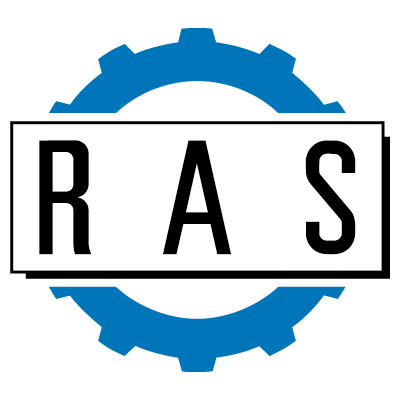RAS TutorialsKnow-How brought to the point
The RAS tutorials explain many aspects of metal folding with short video sequences.
What is metal folding?
Folding is a manufacturing process in metalworking and is used for bending sheet metal. We place the piece of metal on the gauging system and the stop-fingers position the sheet on the bend line. Then the upper beam tooling clamps the sheet against the lower beam. Next, the folding beam moves up and bends the metal to the programmed angle. Finally, the upper beam opens and the bent part can be removed.
When is folding technology suitable for metal parts?
With metal folding technology, the folding beam moves to the programmed angle. This allows almost any angle to be bent without having to change tools. When flexible production with small batch sizes is required, folding plays to its strengths. Easy handling, fast setup, high surface quality, quick bending sequences, flexible design possibilities, and low unit costs ... Criteria that clearly speak for metal folding.
Simple Handling
When bending panels on a folding machine the base side remains on the backgauge system. Through the swinging motion of the folding beam the shorter flanges are bent to the programmed angle. In contrast to a press brake, the work piece does not need to be followed upwards during the bending process. Smaller parts are ideal candidates to be handled from the folding beam side. Large scale bending components are ideal candidates to be handled from the back side of the machine. Simple handling makes folding technology an ideal solution, especially for large scale components.
Quick setups
A quick tool setup is a very decisive factor in the question of whether a metal folding machine operates economically. Often, tool changes are limited to the tool segments found along the working length of the machine. For machinery frequently used for craftsmanship work, RAS tooling uses an eccentric quick-release system. For industrial applications, an automatic clamping system is used. When it comes to small lot sizes or tall and heavy tooling, an automatic tool changer should be considered. With such quick setups, folding technology is ideal for short runs even with a lot size quantity as small as 1.
Up-Down Metal Folding Explained
Up-Down Metal Folding Explained
With folding machines that only bend upwards, the movements of the beams and the backgauge are simple and manageable. Machines that bend up and down are significantly more complex. Although the sequence of motions appears complex, the machine user doesn't have to concern themselves with programing them. The Bendex programing software automatically programs the sequences and visualizes the Up-down bending with the pendulum and free-move movements in a 3D simulation.
Up-Down Bending with 1 or 2 Folding Beams
Some Up-Down folding machines have one folding beam, others have two folding beams. The video explains, which applications require one design, and which require the other?
Radius bending
With metal folding, radii can be bent in different ways. If the same radius is always required, a custom-made radius tool produces the fastest results.
However, step bending is used much more often. This allows sharp-edged bends and radii to be combined in one sequence. The radii are created by adding short bending segments to one another. Special tools are not required for this.
Folding Stainless Steel and Coated Materials
Not only can mild or galvanized steel be bent with folding technology, but also a wide variety of specialized materials. Maintaining a perfect surface finish is often important when forming stainless steel. Imprints or scratch marks on visible surfaces must therefore be avoided at all costs. This is where folding technology plays to one of its strengths. Scratch free bending is of course also a major concern when bending pre-painted blanks. In these applications, it is usually not possible to completely go without surface protection, but thinner and easily removable protective films can be used.
Bending Perforated, Expanded, Composite, and Embossed Metal Sheets
In the 8th tutorial video, we discussed using folding technology to bend stainless steel and coated materials. This video focusses on materials like:
- Perforated sheets
- Expanded metal
- Composite materials
- Diamond- or checkered-plate sheet metal









